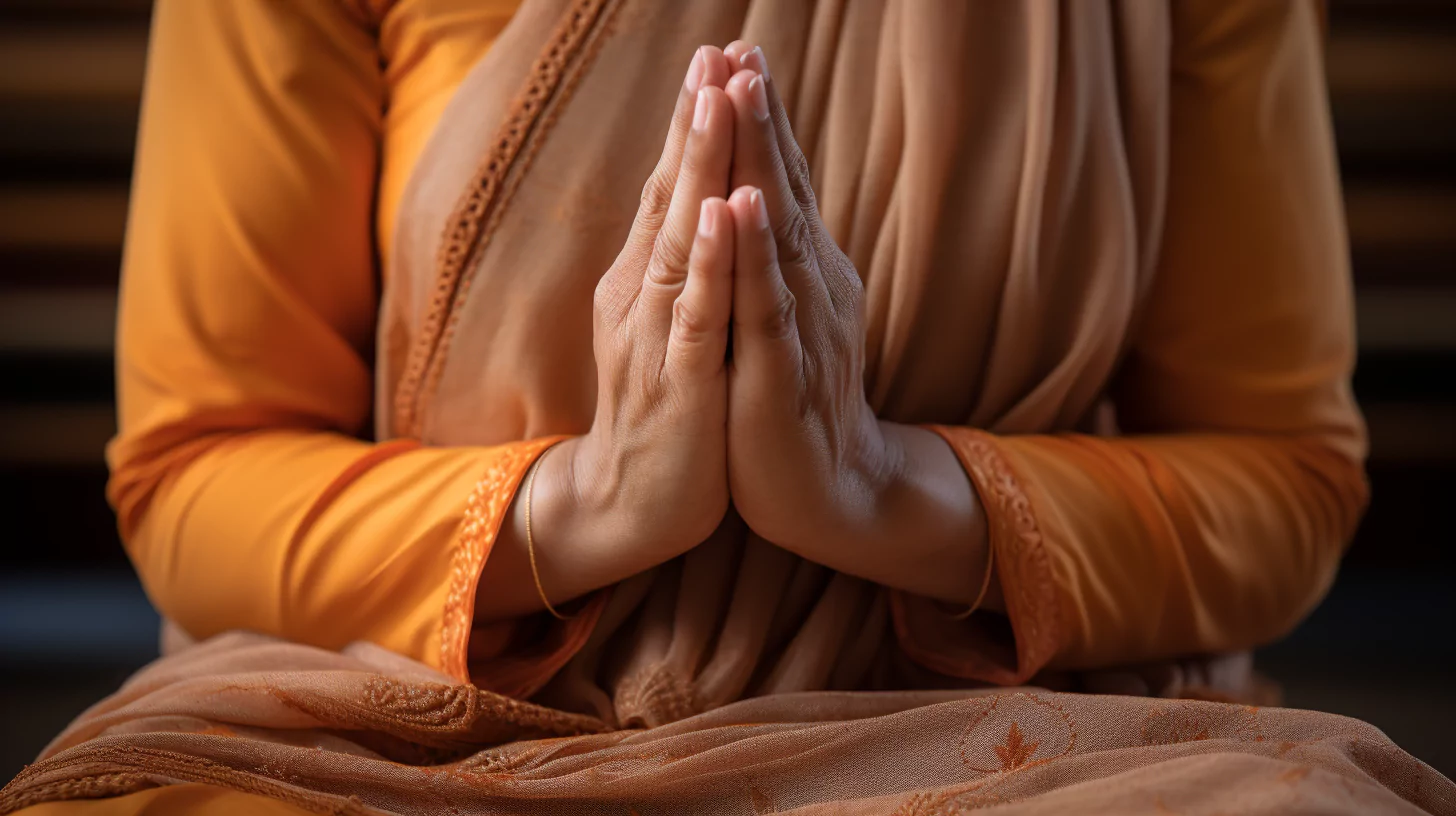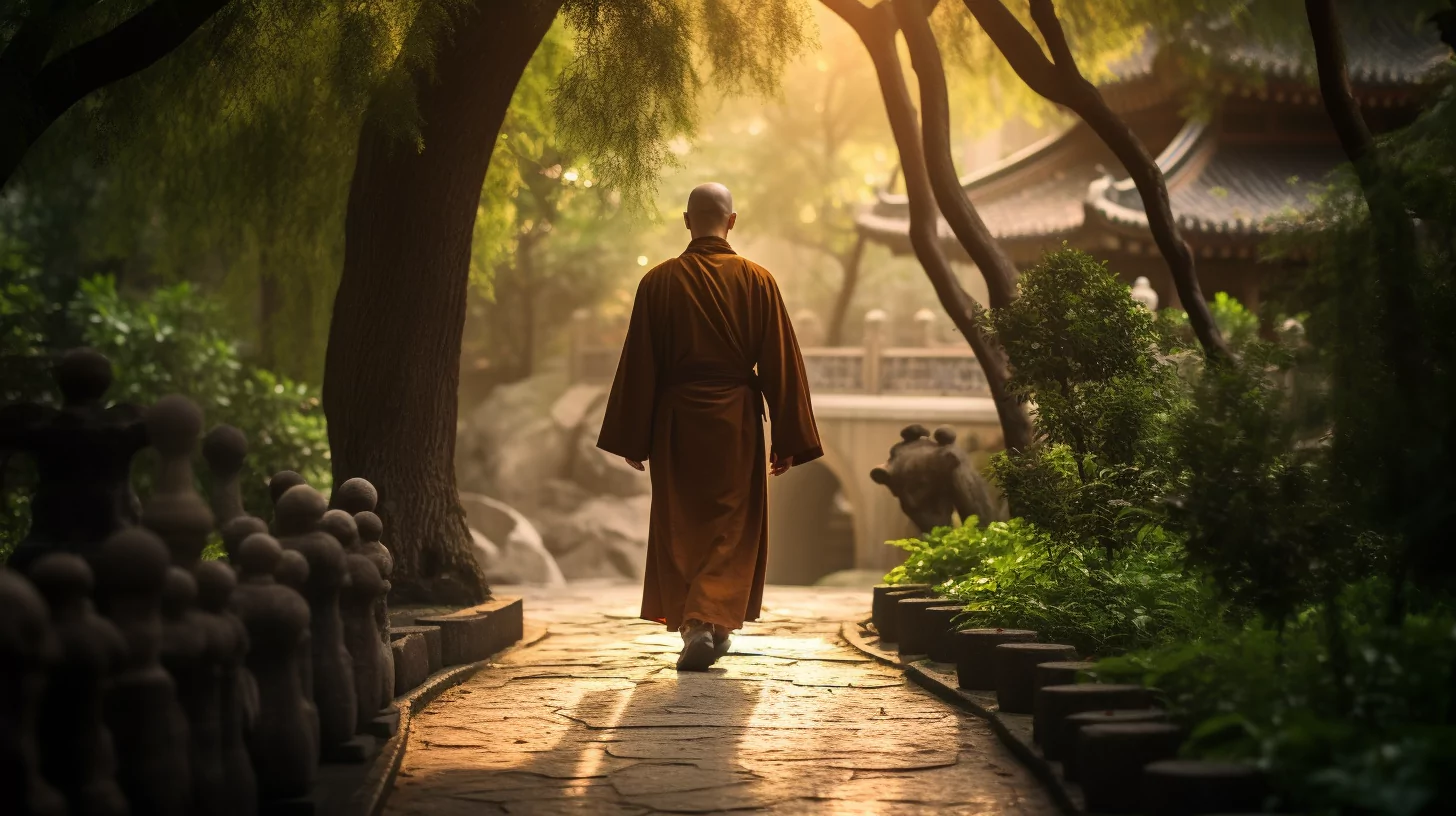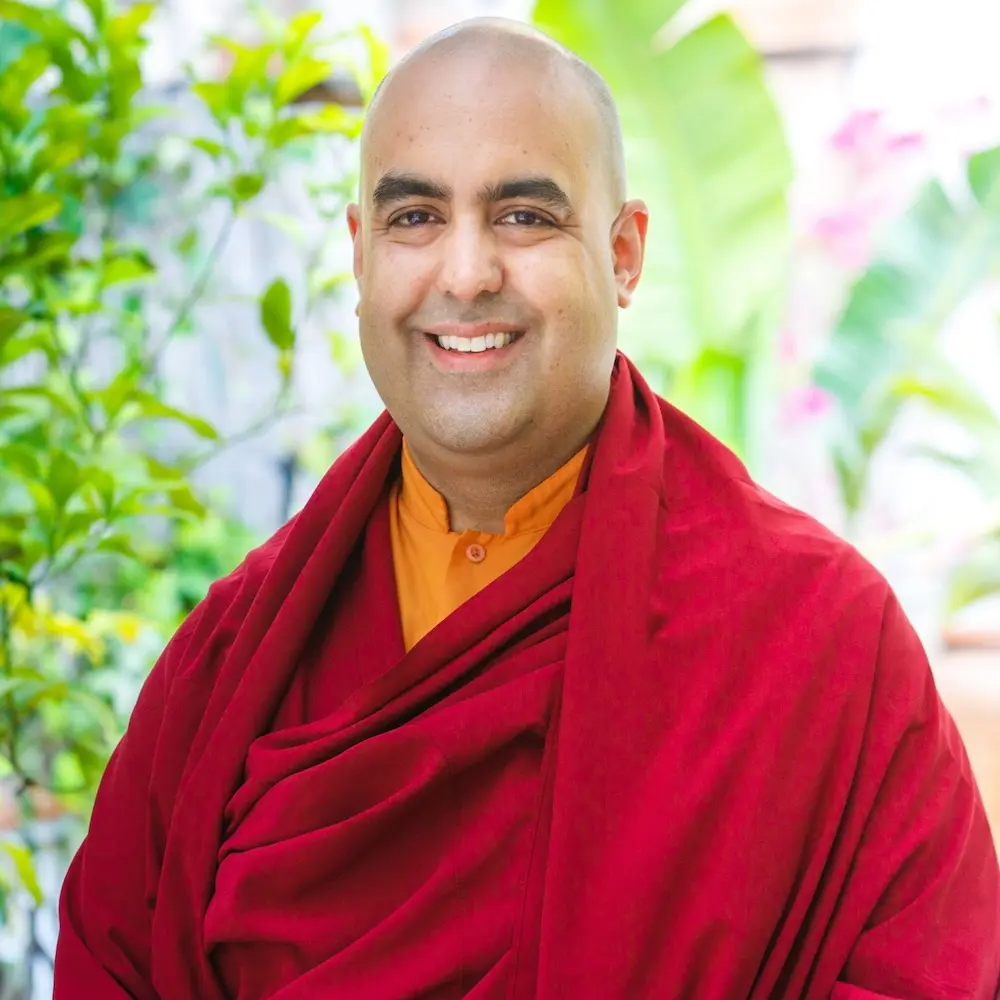In the rapid pulse of today’s digitized era, amidst the noise of tweets, posts, and endless scrolling, there lies a silent echo of ancient wisdom. Can you hear it?
It’s a voice that’s been resonating for over a thousand years—a whisper from the heart of the Gobi Desert. The Diamond Sutra beckons, offering solace and enlightenment to those who seek it.
But what is this sacred text? And why should you, in this day and age, care about it?
What is the Diamond Sutra?
At its core, the Diamond Sutra is part of Buddhism’s ancient teachings (not the gleaming jewel its name might suggest). This isn’t just any guide; it’s a record of a profound conversation meant to unravel the intricacies of existence and enlightenment.
The sacred text has a captivating origin. Nestled within the secluded chambers of the Dunhuang caves, it remained silent and undisturbed for centuries. These caves, often likened to time capsules, offer glimpses into a world long gone. In that world, the Silk Road wasn’t just a trade route; it was the beating heart of civilization, pumping knowledge, culture, and spiritual teachings across continents.
In the realm of Buddhist texts, the Diamond Sutra holds a unique place. Its teachings are deeply rooted in ancient wisdom, no doubt. But the questions it poses and the insights it provides are startlingly relevant, even in today’s bustling modern world:
How do we find meaning amidst chaos? How can we lead a life that doesn’t just chase material pursuits?
The Diamond Sutra beckons every reader to pause, reflect, and discover truths that resonate across ages. Plus, there’s a charm in connecting with a voice from the past, especially one that seems to understand the dilemmas of the present.
When was the diamond sutra written and printed?
The Diamond Sutra text was printed in 868 CE, during the 4th moon of the Xiantong era. This date places it ahead of many renowned historical texts.
Where was the Diamond Sutra printed?
The origins of the Diamond Sutra trace back to China, a country with a deep cultural heritage and a convergence point for various spiritual ideologies.
Buddhism itself branched into two main paths, Theravada and Mahayana. Interestingly, it’s the latter, which believes that all beings—not just monks—can attain enlightenment, that became more prevalent in China.
And though Buddha’s profound insights originated in Nepal, the very fact that the Diamond Sutra was printed in China shows the extensive reach and embrace of his teachings.
Where is the Diamond Sutra located?
Fast forward to today, and you’ll find the Diamond Sutra nestled in the heart of London, within the prestigious corridors of the British Library. (For the tech-savvy souls of our age, you can view it digitally, which is bound to give you an immersive dive into ancient philosophies.)
Thanks to the International Dunhuang Project (of which the British Library is a part), a universe of relics and manuscripts has been unlocked. And just like the Silk Road connected different cultures years ago, this digital project now links us to ancient wisdom with just a click.
In this mix of the past and present, the Diamond Sutra shows us the timeless strength of knowledge. And it takes us back to a world filled with endless wisdom.

What is the Diamond Sutra about?
As one of the most revered Buddhist sutras, the Diamond Sutra is a conversation between the Buddha and his disciple, Subhuti. It dives deep into the mysteries of existence, exploring themes like the essence of reality, the fleeting nature of life, and the path to enlightenment.
As the pages turn, you’re invited to embark on a transformative journey. Through the words of the Buddha and Subhuti, there are the core tenets of Mahayana Buddhism, such as Sunyata (emptiness), the concept of no-self, and what true enlightenment means.
The beauty of this text lies not just in its ancient wisdom but also in its universal appeal. While rooted in Buddhist philosophy, its teachings resonate with anyone seeking clarity and understanding in life.
“A myth we have believed throughout our lives is that we have to ‘get’ happiness, and if we can just get the external details of our lives right, we will be happy,” Gelong Thubten, a Buddhist monk and trainer of Mindvalley’s Becoming More Loving program, explains. “This is not happiness; it is a form of enslavement.”
So with the Diamond Sutra, it challenges you to question your perceptions, urging you to look beyond the surface. By contemplating the sutra’s teachings, you begin to realize that your understanding of the self, the world, and existence itself is far more nuanced than you often assume.
Diamond Sutra summary
As mentioned, the heart of the Diamond Sutra is a dialogue—a meaningful exchange between the Buddha and Subhuti. With their discussion of the nature of reality and enlightenment, it becomes clear that this sutra doesn’t stand alone. It’s actually part of a grand tapestry of interconnected wisdom.
The Four Noble Truths, for instance, explore the existence of suffering, its origin, its cessation, and the path leading to the cessation. The Diamond Sutra touches upon these truths, emphasizing the impermanent nature of life and how our attachments often lead to suffering.
Similarly, the Eightfold Path—a guideline for ethical and mental development with the goal of freeing individuals from attachments and delusions—finds its essence reflected in the Diamond Sutra. The sutra encourages right understanding, right intention, and the kind of ethical conduct that the Eightfold Path promotes, all leading toward enlightenment.
Moreover, the Heart Sutra, another cherished text in Mahayana Buddhism, shares a deep kinship with the Diamond Sutra. They both look into the concept of “Sunyata,” or emptiness. While the former is like a short summary of Buddhist ideas, the latter goes into more detail, giving readers a more expansive view.
Simply put, the Diamond Sutra is like a bridge, connecting various pillars of Buddhist thought. It’s a harmonious blend of philosophy and guidance, linking age-old wisdom into a cohesive understanding of life and beyond.
Diamond sutra quotes
The best way to tap into the ancient power of this sutra is by exploring its passages. Even though this ancient text was originally written in Sanskrit, English translations are available. And this makes it more accessible to tap into its life-transforming messages.
Here are some powerful passages from the Diamond Sutra used in Buddhist meditation. See if you can tap into its deeper meaning.
“So you should view all of the fleeting worlds:
A star at dawn, a bubble in the stream;
A flash of lightning in a summer cloud;
A flickering lamp, a phantom, and a dream.”
“Some of them taught that all worldly things are unreal, because [they are] a result of the perverted views. Only that which transcends worldly things and can be called “emptiness,” being the absence of them all, is real.”
“It is a perfection that does not aim at completion. Rather, it is wisdom based on practice through which one is always progressing toward the ideal.”
How can I use the wisdom of the Diamond Sutra in my own life?
The timeless teachings of the Diamond Sutra aren’t just ancient words on paper. They’re actionable insights that can profoundly influence your modern-day existence.
Wondering how? Here are three steps to integrate this age-old wisdom into your daily life:
- Practice mindfulness. Just as the yoga sutras emphasize the power of meditation and stillness, the Diamond Sutra encourages self-awareness. By regularly tuning into your own thoughts and emotions, you can understand the fleeting nature of life. Setting aside moments in your day, whether it’s through meditation, reflective reading, or simply quiet contemplation, allows you to stay present and connected to yourself.
- Seek beyond the material. In today’s world, it’s easy to get caught up in the chase for the next big thing. The Diamond Sutra teaches the importance of looking beyond materialistic desires. This doesn’t mean giving up on comforts but finding contentment in simplicity and recognizing the impermanence of material possessions.
- Chant or reflect regularly. Unlike typical books, spiritual sutras like the Diamond Sutra are meant for continuous exploration. Consider creating a routine where you recite or reflect on passages that resonate with you. Over time, you’ll find these words guiding you, helping to bring clarity to challenging situations, and grounding you in times of chaos.
By adopting these practices, you’re not just reading about ancient teachings—you’re living them. In doing so, you open the door to compassion
It’s as Gelong explains: “The sense of heart expansion, connecting with all sentient beings.” And that can lead you to a more enlightened and fulfilled life.

Awaken your unstoppable
The journey toward enlightenment isn’t a distant dream; it’s a reality for those willing to seek it. So even with life’s hustle and bustle, take a moment to open a door to a new perspective.
At Mindvalley, there are plenty of resources at your disposal. With experts to guide the way, you’ll be in good hands to dive into a space of deeper understanding and purpose.
If you’re already a Member, you can explore these programs:
- Becoming More Loving with Gelong Thubten. You’ll immerse yourself in daily practices that unlock deeper levels of compassion and forgiveness.
- Awaken the Species with Neale Donald Waslch. You’ll embark on a journey to discover your true divine nature and elevate every area of your life.
- A Journey to Infinitheism with Mahatria Ra. You’ll harness spirituality as a tool for self-mastery, embrace emotions as catalysts for growth, and forge a deeper connection with both yourself and the Divine.
If you’re not yet a Member, you can sign up for a free Mindvalley account to unlock access to the first few classes of the programs. There, you’ll be able to get a glimpse of the insights and wisdom of these experts.
Not only that, there will be four new meditations every day that you can do to bolster your spiritual practice. And if you need a friend, Mindvalley has a wonderful community of people all around the world who are also looking to level up in their lives.
As Mahatria Ra says, “There are no small changes in life. Every small change in the long run is a monumental transformation.”
Welcome in.








